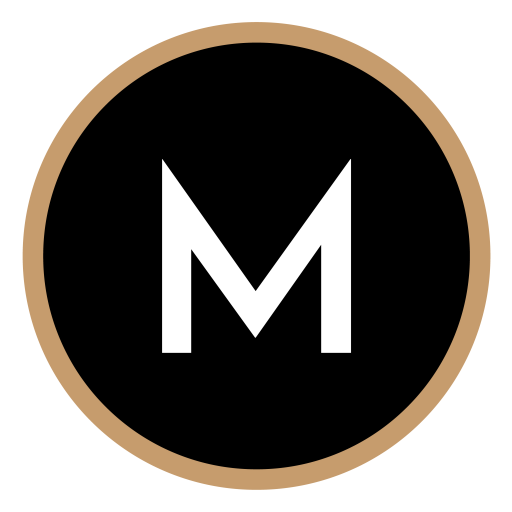Cheap clients are the most expensive. But many businesses struggle to upgrade their clientele.
This is because wealthy clients have a high bar for buying products and services.
But there are 10 key ways to land and retain high-paying clients — and create the right content for them.
Use these 10 Ps to attract and keep them for good:
- Personalization
- Public figures
- Performance
- Placement
- Pedigree
- Persona
- Paucity
- Pricing
- Paint
- PR
#1 Personalization
High-paying clients expect you to customize their experience. This can include your:
- Delivery timelines and methods
- Payment methods
- Work approach
- Final output
- Pricing
While you might have to bend to the preferences of high-paying clients, such deep personalization means you can charge more.
For example, if you’re used to PayPal payments for remote work, you might need to use Wise or Deel to get paid.
If you usually deliver work in a week, they might need it in 3 days.
For either of these requirements, charge an express fee. They expect it and are usually happy to pay.
You can address personalization in your content by talking about your:
- Flexible payment methods
- Express delivery times
- Customer service level
- Customized pricing
#2 Public figures
A premium good or service benefits from other famous people using, wearing, or interacting with it.
Wealthy clients want to associate with products or services loved by other wealthy, well-known people. So, use lots of social proof.
- In your content, highlight relevant clients you’ve worked with and any case studies you have.
- For premium photography services, shoot a few influencers or celebrities for your portfolio.
- Ensure your fashion items are worn by famous people.
- Invite a few VIPs to your event.
#3 Performance
Luxury marketing demands high performance from your goods and services.
This applies whether you sell premium coaching, high-end jewelry, or upscale food.
Your materials, processes, finishes, and results should be top of the range.
- If you’re a creative freelancer, high performance means delivering outstanding work.
- If you sell luxury products, your goods should withstand wear and tear for a long time.
- If you’re an e-commerce brand, remove friction from the shopping, buying, unboxing, and usage process.
The higher the quality of your offering, the more you can charge for it.
To highlight your superior offering, share content about:
- How efficient your processes are
- How well your services perform
- Your product’s lifetime value
- Durability and strength
- Etc.
Here are some ways you can highlight product performance in your content:
- “Our cars go through a 300-point check.”
- “Our whiskey is five times distilled.”
- “Our steaks are aged for 45 days.”
#4 Placement
Luxury marketing means being picky about where you place or advertise your product.
Where your product is sold also affects its perception. For example, you don’t see Bentleys being advertised in dodgy dealerships.
This means:
- If you have a website or social media channels, showcase only your best work.
- If you’re a media personality, don’t just be seen at every event.
- If you’re an influencer, don’t just work for any brand.
Be selective.
#5 Pedigree
Luxury products usually allude to their origins, materials, or laborious processes:
- German engineering
- Belgian chocolates
- Handmade shoes
- Crocodile leather
- Swiss watches
This is because a product’s pedigree matters in luxury marketing.
For example, wines always emphasize their history:
- A long line of winemakers
- Aged in certain barrels
- Bottles decades old
- Etc.
They know you’re not just buying the wine — you’re buying its history.
So ask yourself: what pedigree or prestige can you use to advertise your goods and services?
Dig deep. Look into your history, materials, production processes, or clientele to find something to share in your content.
For example, these traits all form part of your pedigree.:
- Historic neighborhood location
- Specialized university degree
- Decades of experience
- Illustrious awards
#6 Persona
Luxury marketing requires an in-depth knowledge of your customer persona.
This ensures you sell them the right story of who they want to be.
At all times, the customer is the center of attention — the hero of the story.
And your brand is their secret weapon.
- Apple doesn’t sell Macbooks. They sell the idea of a cooler, more creative individual.
- High-end resorts don’t sell you rooms. They sell you rest, relaxation, and tranquility.
You’re buying the dream, not the product.
To attract high-end clients, elevate your language:
- It’s not just far away, it’s “Tucked away in the mountains of…”
- It’s not just a quiet engine, it’s “The quietest cabin in a car yet.”
- It’s not just a digital agency, it’s “Uncommonly clear writing and design.”
Words matter.

#7 Paucity
Paucity means scarcity. In luxury marketing, less is always more. This applies to your:
- Time
- Product
- Audience
- Availability
E.g. Bugatti only sells a few cars each year — by design. If everyone could have one, it’d lose its value.
To apply paucity to your business, simply limit your number of:
- Fashion pieces produced
- Membership slots open
- Event tickets sold
- Clients served
- Etc.
It’ll send the message that you’re not for everybody and that you won’t be available for long.
In your content, you can emphasize paucity by highlighting your:
- Looming deadline
- Packed calendar
- Long waitlist
- Etc.
Offer less to earn more.
#8 Pricing
Don’t rush to offer discounts when dealing with high-paying clients.
Cost isn’t always a big factor — quality is. Offering low prices and discounts implies:
- Zero exclusivity
- Low self-worth
- Low-quality
Not everyone should be able to afford you.
State your prices confidently. This saves everyone time. People will either:
- Qualify themselves and work with you; or
- Disqualify themselves and move on
Clients can always sense when you’re trying too hard to justify your prices.
It implies you’re not sure about your value, which is a red flag.
#9 Paint
Your ‘paint’ is how your product or service looks externally.
This includes your:
- Packaging
- Layouts
- Colors
- Fonts
- Voice
- Logo
To attract high-end clients, your ‘paint’ should evoke a sense of prestige, abundance, or exclusivity.
Image matters.
Luxury marketing design means using the right color combinations and fonts consistently.
It also means using uncluttered design layouts to advertise your products.
Look at the brand identities of expensive wines, perfumes, watches, and cars. They all signal, “We’re expensive.”
From a content perspective, remain consistent with your branding and add your:
- Brand colors on all graphics
- Stamp on all documents
- Name on all write-ups
- Logo on all visuals
- Voice on all audio
These all form part of your ‘paint.’
Good packaging is crucial, as wealthy clients judge you on it.
There’s a reason high-end restaurants invest in premium cutlery, and why premium perfumes come in designer boxes.
Pay extra attention to what your product arrives in, and invest in your visuals and branding.
#10 PR
It’s not a luxury product or service if nobody wants it. The whole point of luxury marketing is to generate FOMO:
“Everyone knows it, but not everyone has it.”
You know what a Ferarri is, but you might never own one in your life. That’s the point.
The goal of luxury marketing is to generate desire. You can do this through:
- Experiences
- Content
- Events
- Ads
The power of your brand’s FOMO is directly pegged to how many people know about it.
So, get your brand in front of as many eyes and ears as possible.
From a content perspective, highlight every instance where your brand gets mentioned or included in an:
- News article
- Event lineup
- Testimonial
- Award list
- Etc.
In short: talk about other people talking about your brand.
Summary of Luxury marketing content tips
- Highlight awards and mentions
- Sell benefits and results
- Show personalization
- Showcase expertise
- Share case studies
- Drive urgency
- Offer less
Share content where your clients are most likely to be.
And don’t just be everywhere.
Implement your luxury marketing strategy today
High-paying clients have a high bar — but that doesn’t mean you can’t reach it.
By using the 10 Ps in your marketing strategy, you too can upgrade your clientele and earn more money going forward.

Mohammed Shehu, Ph.D. writes on content and marketing for creators and brands. You can find him online @shehuphd everywhere.

